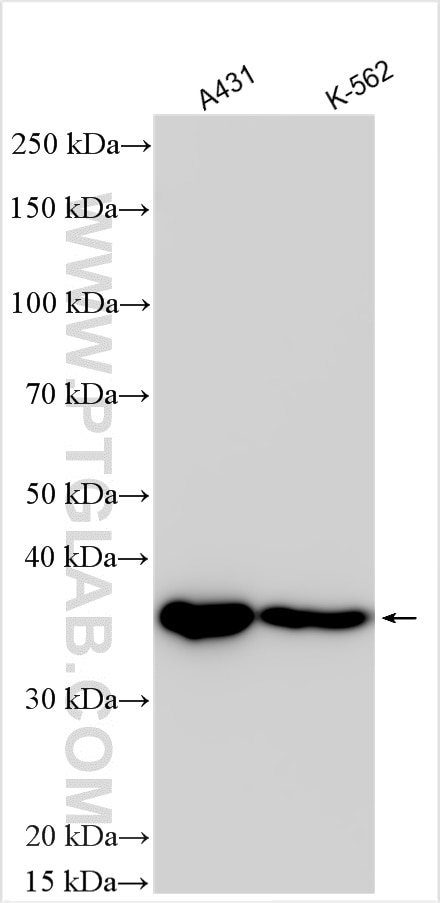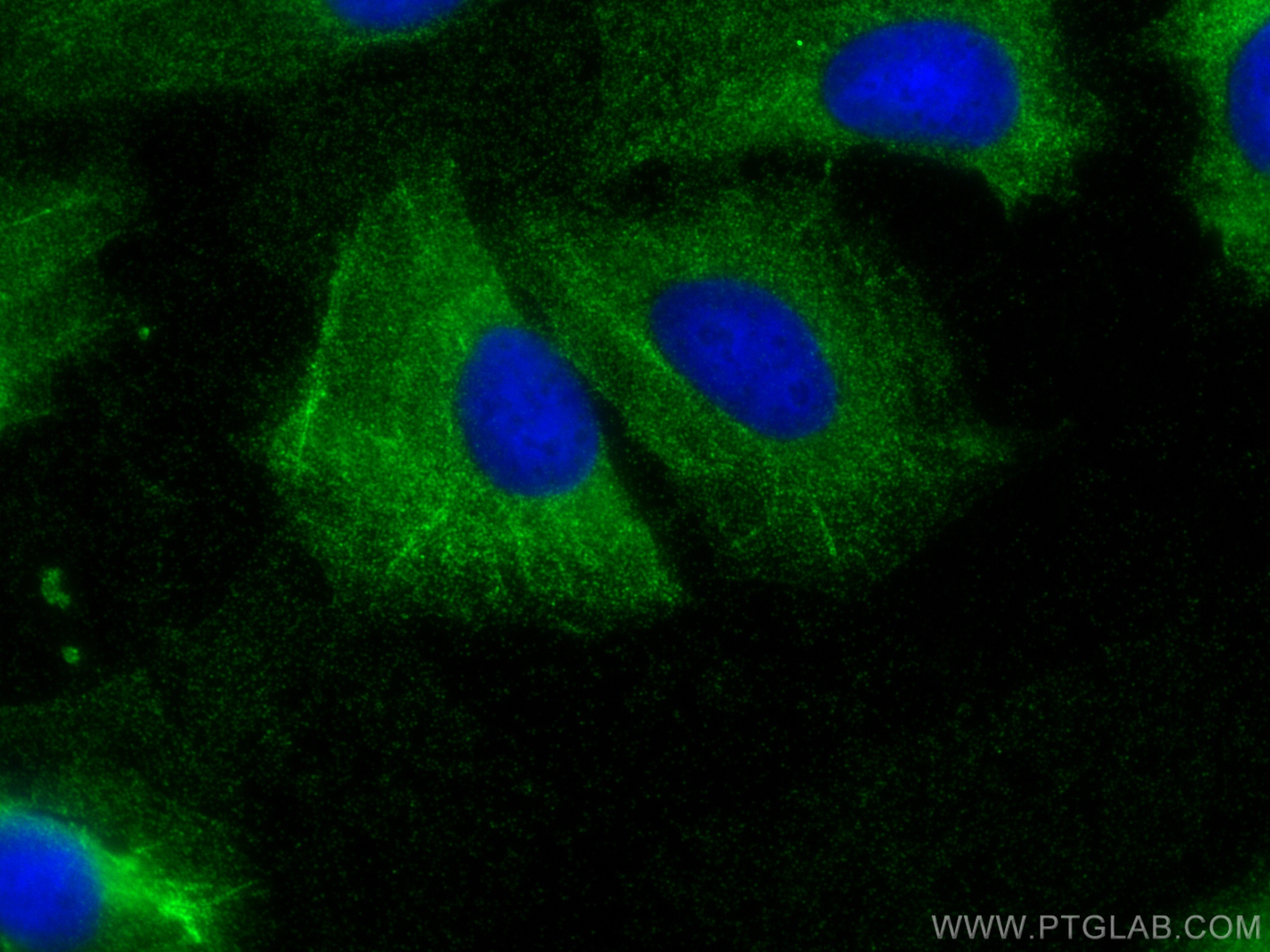PDLIM4 Polyclonal antibody
PDLIM4 Polyclonal Antibody for WB, IF, ELISA
Host / Isotype
Rabbit / IgG
Reactivity
human
Applications
WB, IF, ELISA
Conjugate
Unconjugated
Cat no : 18543-1-AP
Synonyms
Validation Data Gallery
Tested Applications
| Positive WB detected in | A431 cells, K-562 cells |
| Positive IF detected in | U2OS cells |
Recommended dilution
| Application | Dilution |
|---|---|
| Western Blot (WB) | WB : 1:1000-1:6000 |
| Immunofluorescence (IF) | IF : 1:200-1:800 |
| It is recommended that this reagent should be titrated in each testing system to obtain optimal results. | |
| Sample-dependent, Check data in validation data gallery. | |
Product Information
18543-1-AP targets PDLIM4 in WB, IF, ELISA applications and shows reactivity with human samples.
| Tested Reactivity | human |
| Host / Isotype | Rabbit / IgG |
| Class | Polyclonal |
| Type | Antibody |
| Immunogen | PDLIM4 fusion protein Ag13424 |
| Full Name | PDZ and LIM domain 4 |
| Calculated Molecular Weight | 35 kDa |
| Observed Molecular Weight | 35 kDa |
| GenBank Accession Number | BC016765 |
| Gene Symbol | PDLIM4 |
| Gene ID (NCBI) | 8572 |
| Conjugate | Unconjugated |
| Form | Liquid |
| Purification Method | Antigen affinity purification |
| Storage Buffer | PBS with 0.02% sodium azide and 50% glycerol pH 7.3. |
| Storage Conditions | Store at -20°C. Stable for one year after shipment. Aliquoting is unnecessary for -20oC storage. 20ul sizes contain 0.1% BSA. |
Background Information
PDLIM4, also known as RIL, is a member of the ALP/Enigma family. PDLIM4 contains one PDZ(DHR) domain and one LIM zinc-binding domain. The LIM zinc-binding domain interacts with the second and fourth PDZ domains of Fap-1, possibly resulting in the dephosphorylation of PDLIM4 (PMID: 21636573). PDLIM4 is involved in osteoblast development and function. The variation of the PDLIM4 locus may be an important determinant of osteoporosis (PMID: 12908099).
Protocols
| Product Specific Protocols | |
|---|---|
| WB protocol for PDLIM4 antibody 18543-1-AP | Download protocol |
| IF protocol for PDLIM4 antibody 18543-1-AP | Download protocol |
| Standard Protocols | |
|---|---|
| Click here to view our Standard Protocols |



